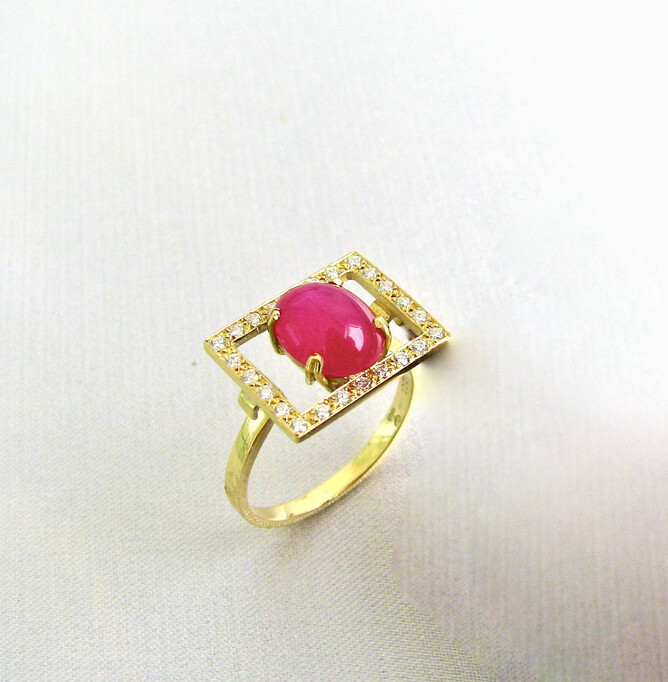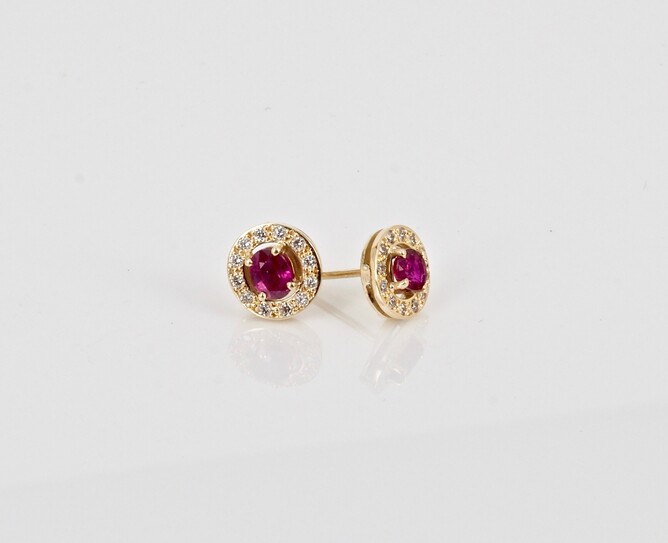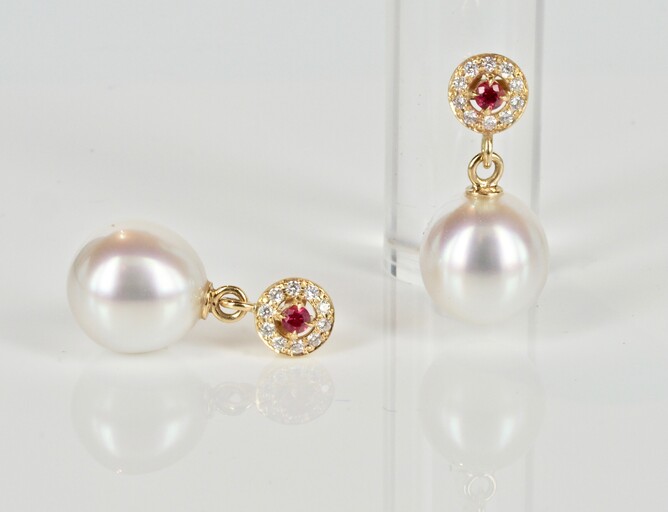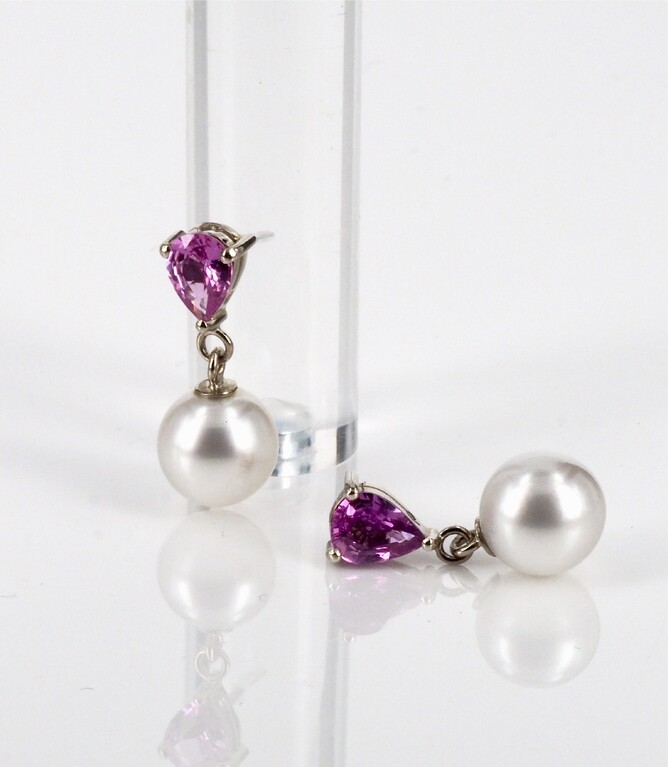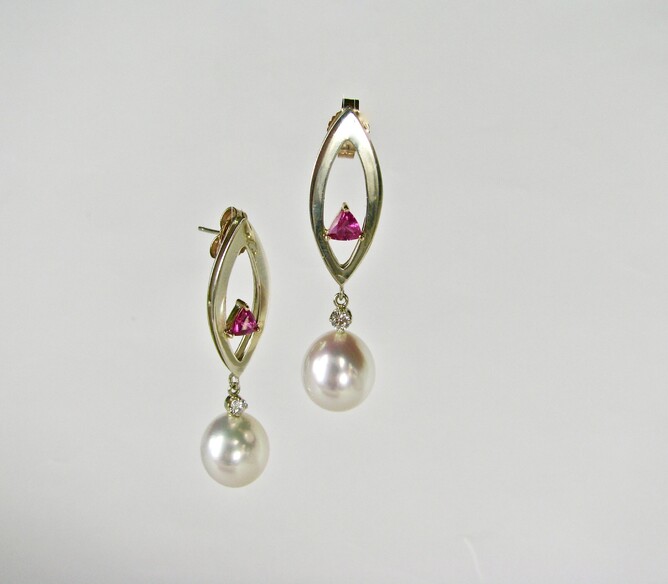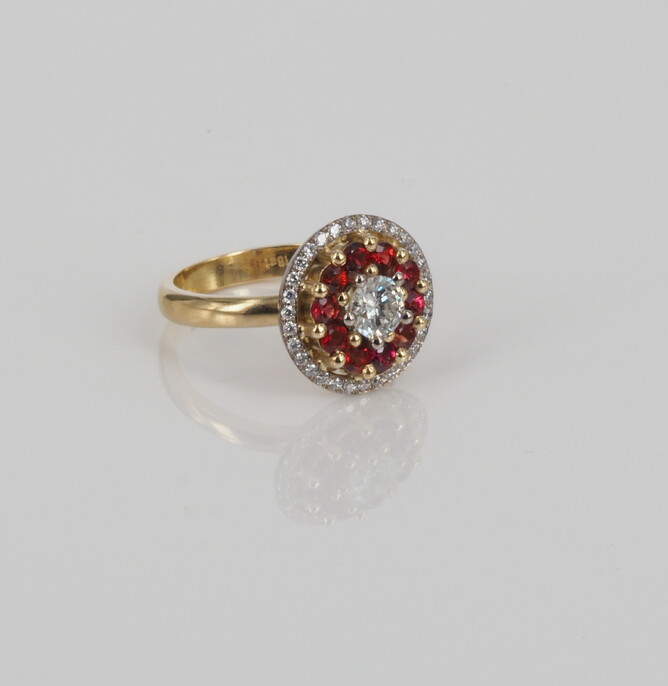July, the month for Rubies.
Rubies are considered one of the most important gems on the coloured gemstone market. They can command the highest price per carat, over any other coloured gemstone. Many cultures considered, and still consider them to be far more valuable than diamonds.
The word ruby comes from the Latin word 'ruber' which means red. In the ancient language of Sanskrit, rubies were called ratnaraj which means 'king of precious stones.'
There are many myths and legends about this beautiful stone. It was treasured by early cultures in the belief that it held the power to life as its red colour was like that of blood flowing through veins.
Ancient Hindus believed that by offering a ruby to the god Krishna, they would be granted rebirth as emperors.
Warriors from ancient Burma believed that wearing a ruby would make them invincible in battle; however the ruby had to be inserted into their flesh to be effective!
Medieval Europeans wore rubies to ensure, health, wealth and love. And in the last few hundred years or more, rubies have been the most sort after gem by European royalty and aristocracy.
Ruby Ring
Where are Rubies from?
Rubies come from a few different countries, but only some are of note.
The first is Myanmar - formerly know as Burma. It is one of the oldest recorded sources of rubies.
The Mogok region of Myanmar has produced some of the finest and most sort after rubies in colour and fluorescence for more than 5 centuries.
From the late 20th century, Luc Yen northern Vietnam and Quy Chau Southern Vietnam, have produced some fine red, to red purple rubies. Today artisanal miners work the regions in the hope of finding a life-changing gem.
Currently, Mozambique has become a big source of fine rubies, some of which have been described as having the beauty of a Mogok ruby.
Ruby Earrings
The rubies below were sold to me as being from Myanmar.
The Beauty of Fluorescence
A truly beautiful ruby is one that has an element of fluorescence.
A little bit of quantum physics is necessary to understand what fluorescence means. (I never thought I would spend time as a jeweller trying to understand quantum physics!)
"Fluorescence in minerals occurs when a specific wavelength of light, such as ultraviolet light, (UV) light, is directed at it. The light excites the electrons in the mineral causing them to temporarily jump to a higher orbit in the atomic structure. When the electron returns to its normal orbit, it emits visible light."
Rubies that have good fluorescence are usually free of other trace elements such as iron, which can inhibit fluorescence.
Understandably, stones that have good fluorescence command even higher prices than stones that don't.
Ruby or Sapphire?
Rubies and sapphires are both the mineral 'corundum.' And to be more specific, corundum is a crystalline form of aluminium oxide ( (Al2O3).
Corundum in its purest form is colourless and it is only when impurities, or trace elements such as chromium, iron or titanium, become part of its crystal structure, that it takes on colour. Chromium is the trace element that makes corundum red.
Light red and dark red corundum have always been referred to as ruby. However, in the late 19th century this changed and light red corundum started to be described as pink sapphires.
Why did this happen?
According to an expert on sapphires and rubies, Richard Hughes, someone incorrectly decided that light red should actually be described as pink.
Curiously the English language, so I am told by a daughter who has studied linguistics, is quite unique with its description for colour. We use more words to describe colour than most other languages, thus leading the way to arbitrary decisions on what colour is actually what...
Somehow this change of colour description saw people in the jewellery trade describing light red rubies as pink sapphires.
With this in mind, the description for corundum is frequently dependant on who is selling it and who is buying it.
In Myanmar fine quality deep red rubies are referred to as 'pigeon's blood.' This is the most sort after ruby colour.
The small pink/red stones in the earrings below were sold to me as pink sapphires. However, they are quite red to me so I am more inclined to think of them as rubies.
Rubies, Diamonds and Gem Grade Pearls
Pink Sapphires and Australian South Sea Pearls
The pretty stones in the earrings below were sold to me as pink sapphires.
What would you call them, pink sapphires or light red rubies?
Rubies and Gem Grade Pearls
The triangle stones in these elegant earrings were sold to me as rubies.
The colour of the stones in the last photo and the photo below, are very similar. As you can see, whether they are called sapphires or rubies is dependant on who is selling them.
How to Care for Your Ruby Jewellery
Rubies are best cleaned by using warm soapy water and a soft brush.
Rubies can also be cleaned in an ultrasonic machine, but you must be sure your ruby isn't heavily included, glass filled or dyed. Otherwise, when you remove your ruby from the ultrasonic machine it may appear to be a completely different stone.
Some rubies are heat treated to enhance their colour. Heat treatment is not an uncommon treatment for a lot of stones. It is a permanent treatment and cleaning such stones will have no effect on their colour.
Heat treatment can be thought of as man finishing off nature's job.
To Conclude
Desire for ruby jewellery today is no less than it was a few thousand years ago - the beautiful red colour of this stone plays with some of our most intense emotions - love, anger and passion.
If this blog has inspired you to purchase a beautiful ruby, then make sure you buy one from a reputable jeweller or jewellery company.
A dodgy company may leave you with a dodgy stone!
Reference
GIA - Gemological Institute of America
International Gem Society
